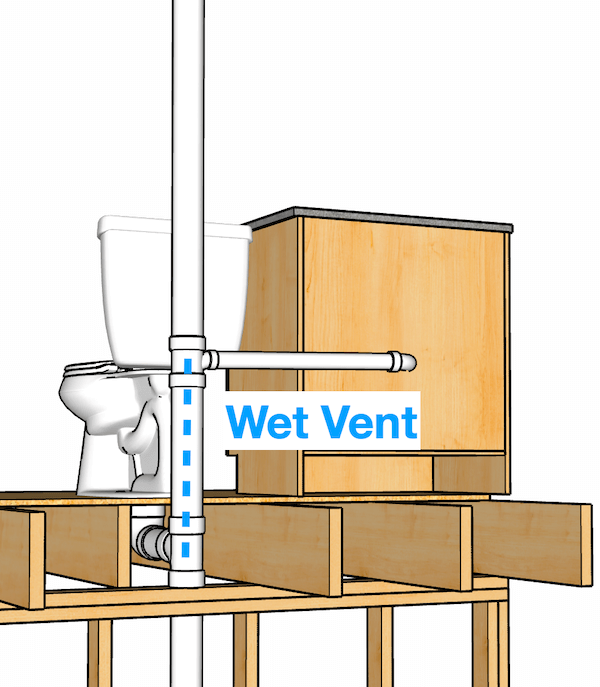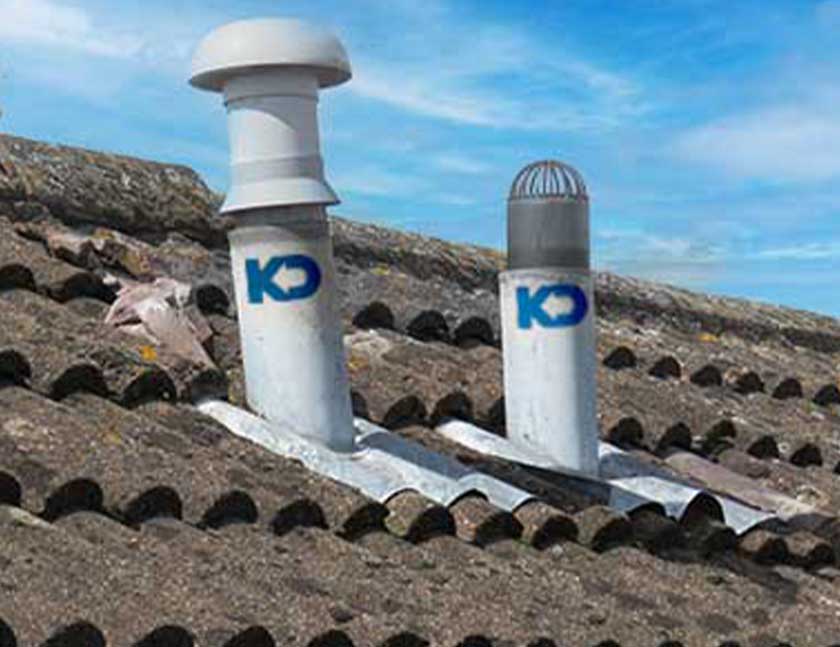Why Adequate Ventilation in Plumbing Systems
Why Adequate Ventilation in Plumbing Systems
Blog Article
Any individual has their private theory with regards to What Is a Plumbing Vent and Why Is It Important.

Correct air flow in pipes systems is commonly ignored, yet it is essential for preserving the capability and safety and security of your home's plumbing. Ventilation helps manage air pressure, protect against the build-up of damaging gases, and guarantee the efficient removal of waste. In this guide, we will certainly explore the relevance of proper pipes ventilation, just how it works, and the benefits it gives your pipes system.
Exactly How Air Flow Works in Pipes Equipments
Atmospheric Pressure Law
Appropriate air flow maintains well balanced air pressure within the pipes system. When water moves via pipes, it displaces air. Without sufficient air flow, this displacement can create adverse pressure, resulting in slow down drains pipes or siphoning of water from traps, which can cause unpleasant smells to permeate right into the home.
Protecting Against Drain Gas Accumulation
One of one of the most critical features of pipes vents is to prevent sewer gases, such as methane and hydrogen sulfide, from building up within the home. These gases can present significant health risks and are extremely combustible. Vent pipelines allow these gases to run away safely outdoors.
Assisting in Waste Removal
Ventilation aids in the efficient removal of wastewater by avoiding airlocks in the drain system. When air can stream openly with the vents, it permits water and waste to flow efficiently via the pipelines, decreasing the threat of clogs and back-ups.
Advantages of Correct Ventilation
Enhanced System Efficiency
Correctly ventilated pipes systems run more successfully, with fewer obstructions, faster draining pipes, and much less stress on the pipes. This performance expands the life-span of the pipes system.
Improved Air Top Quality
By avoiding drain gases from entering your home, proper ventilation adds to better indoor air top quality, making your living environment healthier and much more comfortable.
Preventing Water Damages
Adequate air flow helps stop water from being siphoned out of catches, which can cause sewage system gases getting in the home and causing water damage in time.
Actions to Make Certain Correct Ventilation
Consulting Pipes Codes
Constantly get in touch with neighborhood pipes codes when developing or modifying your pipes system. These codes supply the required guidelines for proper airing vent and ensure your system fulfills safety criteria.
Regular Evaluation and Upkeep
Normal examinations can assist recognize prospective ventilation concerns before they become major issues. Maintenance jobs, such as cleaning air vent pipes and looking for blockages, are necessary for maintaining the system in good working order.
Specialist Installment
For new installations or significant alterations, it's wise to hire a professional plumbing professional. They have the expertise to ensure the air flow system is properly developed and set up according to code.
Recognizing Air Flow in Pipes
Ventilation in pipes describes the network of pipelines that allow air to flow via the drain system. These vents serve numerous purposes, including controling atmospheric pressure within the pipes, preventing drain gases from getting in the home, and assisting in the smooth flow of wastewater.
Kinds Of Pipes Vents
Key Stack Vent
The major pile vent, also referred to as the vent stack, is the key air vent in a pipes system. It prolongs from the main drainpipe align through the roofing system, allowing gases to run away and fresh air to enter the system.
Branch Vent
Branch vents attach to the main pile air vent and serve private fixtures, such as sinks, bathrooms, and showers. These vents make certain that each fixture has adequate ventilation to operate appropriately.
Air Admittance Valve (AAV).
An Air Admission Valve (AAV) is a one-way valve that enables air to get in the pipes system without the need for a traditional air vent pipe expanding through the roofing system. AAVs are typically made use of in restorations or areas where setting up a basic vent is unwise.
Indications of Poor Air Flow in Pipes.
Slow Draining Fixtures.
If your sinks, bathtubs, or commodes are draining pipes slowly, it could be an indicator of poor ventilation. Poor air circulation can develop a vacuum cleaner effect, making it difficult for water to drain pipes properly.
Gurgling Appears.
Gurgling noises originating from drains pipes are typically an outcome of air being drawn with water traps because of unfavorable pressure in the pipelines. This is a clear indication of not enough air flow.
Unpleasant Odors.
Sewer smells inside your home are a warning that your plumbing system is not correctly aerated. This could suggest that drain gases are not being appropriately aired vent outside, resulting in potentially unsafe conditions.
Typical Air Flow Errors.
Poor Vent Sizing.
Making use of undersized air vent pipes can lead to inadequate air circulation and stress discrepancies in the system. It's important to utilize vents that meet the certain requirements of your plumbing system.
Improper Vent Placement.
Positioning vents also far from the components they serve can minimize their effectiveness. Proper positioning guarantees that air can flow openly and effectively through the system.
Disregarding Code Needs.
Building ordinance give particular guidelines for pipes air flow. Neglecting these codes can lead to a system that fails to function appropriately and might cause costly repair services or health hazards.
Conclusion.
Correct air flow is an important component of any type of plumbing system, ensuring that it functions effectively and securely. By comprehending the relevance of ventilation, acknowledging the indications of inadequate ventilation, and taking actions to maintain your system, you can stop costly issues and safeguard your home's air top quality.
4 Things You Should Know About Your Plumbing Vents
What Plumbing Vents Are
Also called a vent stack, a plumbing vent is a vertical pipe attached to your drain line that runs through your roof. The plumbing vent pipe, or plumbing air vent, removes gas and odors from your plumbing system and allows fresh air to enter the pipes, helping the water to flow out of the drain pipes.
What Plumbing Vents Do
Plumbing vents have two basic functions. One of which is to allow unpleasant smelling wastewater and sewer gasses to escape your plumbing system instead of entering your home. Plumbing vent pipes are typically located on roofs, away from windows, to ensure the fumes exit the home completely.
The other function of the plumbing vent is to move fresh air into your plumbing system. This helps move water through every plumbing fixture in your house, like toilets and sink drains. Think of the way in which you need to let a little air into the bottle as you pour soda in order to make the drink flow smoothly.
Different Types of Plumbing Vents
True vent: This is the most common vent option. In simplest terms, a true vent is a vertical pipe attached to your drain line that exits through the roof. They often function as the main vent that other fixtures can connect to. Re-vent pipe or auxiliary vent: Attached to the drain line near specific plumbing fixtures, re-vent pipes run up and over to connect to the main vent. Common vent: Two plumbing fixtures installed on opposite sides of a wall are typically tied into the vent stack using something known as a sanitary cross. Wet vent: This venting option operates as a drain pipe and a vent at the same time. Wet vent drainage systems drain water from one fixture while venting the air from another. Although they’ve been used for over 100 years, wet vent systems have only recently been added to the plumbing code in many areas. If you’re planning on installing one in a bathroom remodel, make sure you check your local code prior to construction. Loop vent: For free-standing fixtures like kitchen island sinks, loop vents are ideal. These vent pipes run under the floor, rise from the P-trap, and create a loop inside the cabinet sink. Air admittance valve: An AAV is a one-way mechanical valve typically installed at the site of the plumbing fixture. AAVs allow venting to occur without having to tie into a larger venting system. They’re ideal for venting fixtures where you aren’t able to easily connect to an existing vent system. Common Plumbing Vent Issues
Although vent pipes typically don’t have water flowing through them, they’re still subject to many typical plumbing issues. For example, clogs are one of the most common problems associated with sewer vent pipes. If your vent pipe gets clogged, all of your plumbing fixtures tied into the vent stack will be affected.
A sink with a slow drain that bubbles and gurgles or a strong sewage smell around your toilet are both indicators that your toilet vent pipe is clogged. Because most vent pipes exit through the roof, old leaves, twigs or even a bird’s nest could be clogging the pipe.
Clogs in your vent pipe system cause a buildup of negative pressure, meaning that water won’t be able to flow out of your home very well. It’s similar to putting your finger over the opening of a straw to trap water inside. When you remove your finger, the water is able to flow out of the straw.
If you suspect you have any blockage in your vent, make sure you have a professional come examine the situation. Left unchecked, a blocked air vent can lead to other costly repairs, like leaks and sediment buildup.
Under Pressure
Pipe vents are essential aspects of a home’s plumbing system. Owning a home means learning about all sorts of things you never put much thought into before. But by understanding as much as you can about the important systems of your home, you can keep those budgets intact and those anxiety levels low.
https://www.homeserve.com/en-us/blog/home-improvement/plumbing-vents/

We had been shown that editorial on What Are Plumbing Vents and Why Are They Important? from a friend on a different web address. Do you know about someone else who is interested in Essential Plumbing Vent Pipes: Understanding Their Role? Feel free to promote it. I enjoy your readership.
Get Quote Report this page